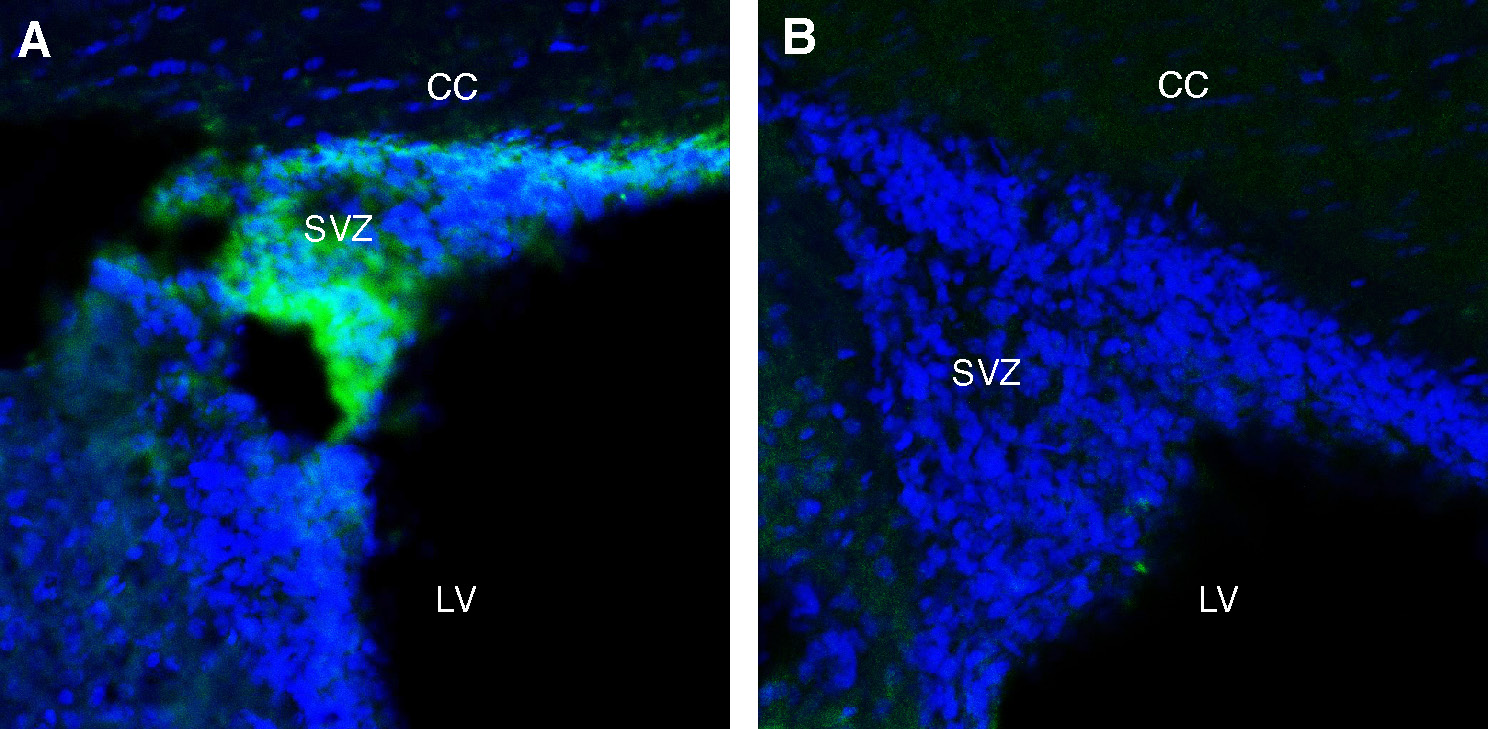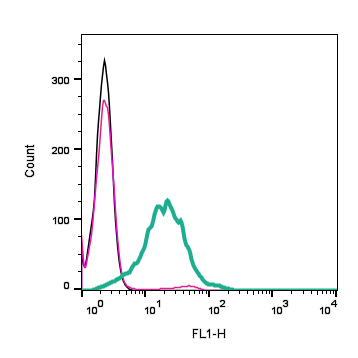Overview
- Peptide (C)EQDWRANGSVGEPVIK, corresponding to amino acid residues 153 - 168 of rat Adenosine A1 Receptor (Accession P25099). Extracellular, 2nd loop.

Adenosine A1 Receptor (extracellular) Blocking Peptide (#BLP-AR009)
 Western blot analysis of rat brain membranes (lanes 1 and 3) and mouse brain membranes (lanes 2 and 4):1-2. Anti-Adenosine A1 Receptor (extracellular) Antibody (#AAR-009), (1:400).
Western blot analysis of rat brain membranes (lanes 1 and 3) and mouse brain membranes (lanes 2 and 4):1-2. Anti-Adenosine A1 Receptor (extracellular) Antibody (#AAR-009), (1:400).
3-4. Anti-Adenosine A1 Receptor (extracellular) Antibody, preincubated with Adenosine A1 Receptor (extracellular) Blocking Peptide (BLP-AR009). Western blot analysis of mouse J774 macrophage cell line lysate (lanes 1 and 3) and mouse BV-2 microglia cell line lysate (lanes 2 and 4):1-2. Anti-Adenosine A1 Receptor (extracellular) Antibody (#AAR-009), (1:200).
Western blot analysis of mouse J774 macrophage cell line lysate (lanes 1 and 3) and mouse BV-2 microglia cell line lysate (lanes 2 and 4):1-2. Anti-Adenosine A1 Receptor (extracellular) Antibody (#AAR-009), (1:200).
3-4. Anti-Adenosine A1 Receptor (extracellular) Antibody, preincubated with Adenosine A1 Receptor (extracellular) Blocking Peptide (BLP-AR009).
 Expression of Adenosine A1 Receptor in rat subventricular zone (SVZ).Immunohistochemical staining of perfusion-fixed frozen rat brain sections with Anti-Adenosine A1 Receptor (extracellular) Antibody (#AAR-009), (1:200), followed by goat anti-rabbit-AlexaFluor-488. A. Adenosine A1 Receptor immunoreactivity (green) appears in the SVZ. B. Pre-incubation of the antibody with Adenosine A1 Receptor (extracellular) Blocking Peptide (BLP-AR009), suppressed staining. Cell nuclei are stained with DAPI (blue). CC = corpus callosum, SVZ = subventricular zone, LV = lateral ventricle.
Expression of Adenosine A1 Receptor in rat subventricular zone (SVZ).Immunohistochemical staining of perfusion-fixed frozen rat brain sections with Anti-Adenosine A1 Receptor (extracellular) Antibody (#AAR-009), (1:200), followed by goat anti-rabbit-AlexaFluor-488. A. Adenosine A1 Receptor immunoreactivity (green) appears in the SVZ. B. Pre-incubation of the antibody with Adenosine A1 Receptor (extracellular) Blocking Peptide (BLP-AR009), suppressed staining. Cell nuclei are stained with DAPI (blue). CC = corpus callosum, SVZ = subventricular zone, LV = lateral ventricle.
- Okusa, M.D. (2002) Am. J. Physiol. 282, F10.
- Nakata, H. (1989) J. Biol. Chem. 264, 16545.
- Linden, J. (1991) FASEB J. 5, 2668.
- Park, K.S. et al. (2001) J. Pharmacol. Exp. Therap. 299, 501.
- Rice, A.M. et al. (2000) Endocrinology 141, 1442.
- LaNoue, K.F. and Martin, L.F. (1994) FASEB J. 8, 72.
- Synowitz, M. et al. (2006) Cancer Res. 66, 8550.
- Lelievre, V. et al. (1998) Eur. J. Pharmacol. 341, 289.
- Khoo, H.E. et al. (1996) Cancer Lett. 106, 17.
Adenosine is an endogenous nucleoside generated locally in tissues under conditions of hypoxia, ischemia, or inflammation. It modulates a variety of physiological functions in many tissues including the brain and heart.1,2 Adenosine exerts its actions via four specific adenosine receptors (also named P1 purinergic receptors): Adenosine A1 Receptor (A1AR), Adenosine A2A Receptor (A2AAR), Adenosine A2B Receptor (A2BAR), and Adenosine A3 Receptor (A3AR). All are integral membrane proteins and are members of the G protein-coupled receptor superfamily. They share a common structure of seven putative transmembrane domains, an extracellular amino terminus, a cytoplasmic carboxyl terminus, and a third intracellular loop that is important for binding G proteins.1-3 The adenosine receptors can be distinguished on the basis of their differential selectivity for adenosine analogs.1-3
A1AR is widely distributed and has been well characterized. High expression of A1AR is found in the brain (mainly in the cortex, cerebellum, and hippocampus), dorsal horn of the spinal cord, adrenal gland, and atria, and to a lower extent in several other tissues including adipose tissue, the colon, and kidney.2,4
A1AR modulates the activity of several ion channels. Activation of A1AR (by adenosine, its major agonist) inhibits N-type Ca2+ channels via a voltage-dependent, pertussis toxin (PTX)-sensitive pathway in neurons of the rat major pelvic ganglia (MPG).5
Since A1AR is the most prominent adenosine receptor in adipocytes, it has become a natural target for research on obesity, which is a major health problem.6,7 A possible role in cell proliferation and carcinogenesis has also been suggested for A1AR.8,9
Application key:
Species reactivity key:
Anti-Adenosine A1 Receptor (extracellular) Antibody (#AAR-009) is a highly specific antibody directed against an extracellular epitope of the rat protein. The antibody can be used in western blot, immunohistochemistry and flow cytometry applications. It has been designed to recognize Adenosine A1 Receptor from mouse and rat samples.
This antibody is not recommended for human samples.

